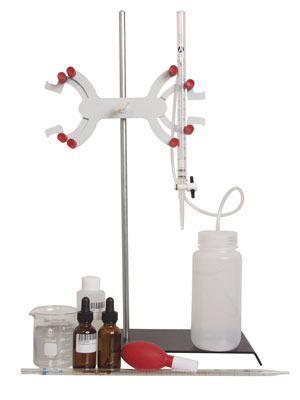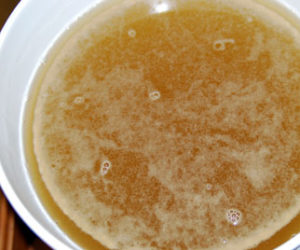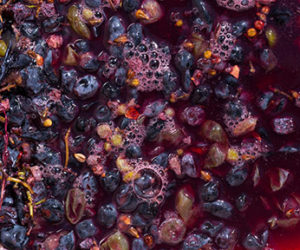
Finding a proper balance of acidity-to-sugar can be one of the most critical factors when trying to produce a fine wine. Not all juice and grapes will arrive at your doorstep with a proper balance of sugar-to-acidity. So one key piece is learning the various acids found in wine, how to measure them, and how you can manipulate them to make sure you are getting the most you can from your time and investment.
Meet The Acids
There are several acid types that are typically found in wine. Most winemakers tend to focus their attention on five acid types that play the biggest roles: Tartaric, malic, citric, lactic, and acetic acid. If you have made wine before I am hoping you may have heard of all five, but if not, I’ll give a brief rundown. Tartaric is the most common acid found in grapes and plays a very significant role in developing what we know as TA (total acidity). Tartaric acid is fairly strong (among wine’s acids) and it plays a key role in a wine’s mouthfeel. Malic acid is another strong acid and the second most important acid in grapes. It presents itself with a sharp bite. This can be a good thing for some wine styles but a detriment to others (more on that later). Citric acid is the major acid component of citrus fruit and is found in grapes as well, but at much lower levels. It does have an intense sour flavor on your tongue but in terms of acidity is much weaker than malic and tartaric. Next there is lactic acid, which is not found in grapes to an appreciable level, but some strains of yeast and lactic acid bacteria (LAB) can convert malic acid into lactic acid. Lactic acid is about half the strength of malic acid. Finally, acetic acid plays a big part in a broad category of acids known as volatile acidity, or simply “VA.” Acetic acid will be found in most wines, but if the VA is noted in a wine’s aroma it is considered a fault. Higher concentrations of VA are usually a result of either grape damage or poor winemaking techniques. For more on VA, check out https://winemakermag.com/article/volatile-acidity-basics
Playing Nicely with Others
When acidity is out of balance with other components of the wine, such as sugar and tannins, you as the winemaker need to figure out how to correct it — if you can. Winemakers focus on two main criteria to measure acidity of wine: pH and TA. pH and TA generally work opposite each other: Low pH generally means higher TA, but that is not always the case. pH can be measured using a simple meter stick reader or for those looking for more precise measurements, a tabletop meter can be purchased. Calibrations of pH meters should be performed prior to taking any readings with them.
TA is measured by performing a titration of the unfermented must or wine. Titration is performed by slowly adding lye (a strong base — sodium hydroxide) to must/wine and getting an exact quantity required to neutralize the solution. Alcoholic fermentation (AF) affects both pH and TA levels, so don’t expect these readings to be the same before and after fermentation.
Once you have these two key readings, you can start to use them as markers to help navigate you to the final wine. Typically total acidity for pre-fermentation red wines is 6–8 g/L, while white wines typically run a little higher, usually in the 7–9 g/L range. Post AF readings should rise slightly, by about 1–2 g/L. These are not set in stone as your taste buds should be the ultimate deciding factor.
If TA is too high, there are several ways to bring it down. Pre-fermentation de-acidification would be the first step, which means the winemaker adds a buffering salt like potassium bicarbonate to react with the tartaric acid and drop the TA levels. A second technique would be to introduce a LAB to convert the stronger malic acid into the softer lactic acid during a malolactic fermentation (MLF). This is most common with red wines and will drop TA ~1–2 g/L. Finally, if total acidity is still too high when you are ready to bottle, you could consider using some form of backsweetening to boost up the sugar component to help balance out the wine.
If TA is too low, you can simply add tartaric acid or an acid blend found at most winemaking shops. The problem with the acid blend is that it contains citric acid, which if LAB was added as well, could be metabolized into acetic acid, further increasing your VA. So try to get the tartaric acid if you are also inoculating with a LAB.
pHiguring It Out
The pH reading does not always seem to line up with TA in that sometimes there can be a high pH and a high TA. Having both of these readings can be important. pH will mainly drive your sulfite additions. The lower the pH, the less sulfite you will need to add and vice versa.
If volatile acidity is a problem with one of your wines, it means you should work backwards in process and figure out where you may have made an error since there are few steps that can be taken to fix VA. Were some of your grapes looking moldy or rotten? Were you punching down the cap enough during maceration? Did you add citric acid and have an MLF occur?
Once you have all the pieces in place, the harmony of all these various components should blend together into one great wine!







